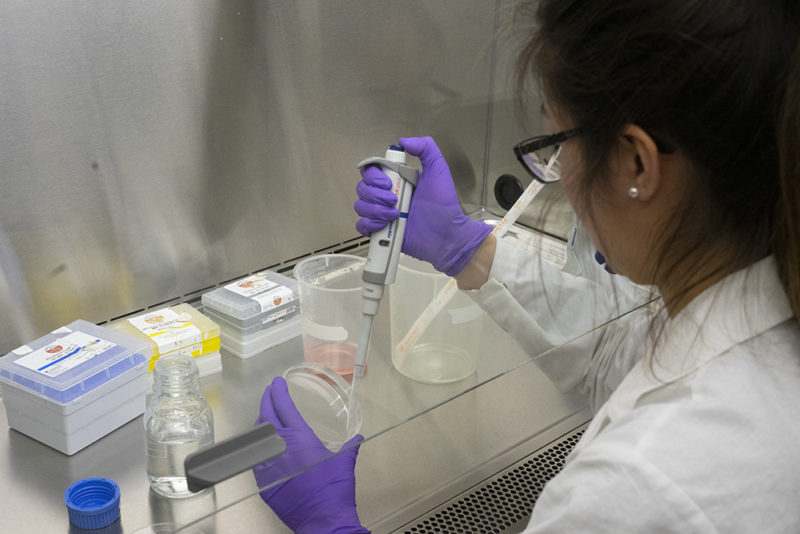Kamiko Bressler, a masters student, prepares a cell culture in Dr. Nehal Thakor’s lab at the University of Lethbridge on Jan. 21, 2018.
An aggressive type of cancer is being researched at the University of Lethbridge in hope of finding a cure. It is the same type of cancer that took notable figures such as Gordon Downie of the Tragically Hip and US Senator John McCain.
Glioblastoma is a form of brain tumour which has a median survival time of 15 months because of the tumour’s resistance to current therapeutic approaches.
“After diagnosis, it has a very poor prognosis. Even with radiation therapy, surgical removal or chemotherapy, the survival time doesn’t improve. Most of the clinical drugs are not effectively working against glioblastoma. Our approach is novel in that we aren’t mimicking the traditional therapeutics,” said Dr. Nehal Thakor, a professor in the Department of Chemistry and Biochemistry and head of the team researching glioblastoma.
According to a 2012 study entitled “Recent advances in the molecular understanding of glioblastoma” published in the Journal of Neuro-Oncology, glioblastoma is the most common and most aggressive primary brain tumour.
The group is looking at how this type of cancer is able to keep itself alive by expressing pro-survival proteins through messenger RNA (mRNA) translation.
“Most cancers have dysregulated gene expression. mRNA translation is one of the components of the gene expression regulation process. Dysregulation essentially makes the cancer cells survive better,” said Thakor.
Dr. Joseph Ross, a postdoctoral fellow in Thakor’s lab, said the main difference in this cancer is its ability to keep mRNA translation effective despite treatment, specifically within the eIF5B protein.
“All cells have mRNA translation but if it becomes dysregulated – in a cancer cell for instance– then that cancer cell is going to express too much of certain types of proteins. Those could be pro-survival proteins or proteins that enable the cell to evade cell death. We found a translation factor called eIF5B that turns out to be playing a role in the incorrect expression of some of these proteins.”
The full team who worked on the study under Thakor and Ross includes Keiran Vanden Dungen, Kamiko Bressler, Mikayla Fredriksen, Divya Sharma and Nirujah Balasingam.
The team’s research on the disease is ongoing, but their study entitled “Eukaryotic initiation factor 5B (eIF5B) provides a critical cell survival switch to glioblastoma cells via regulation of apoptosis” is set to be published in the Cell Death and Disease Journal.



